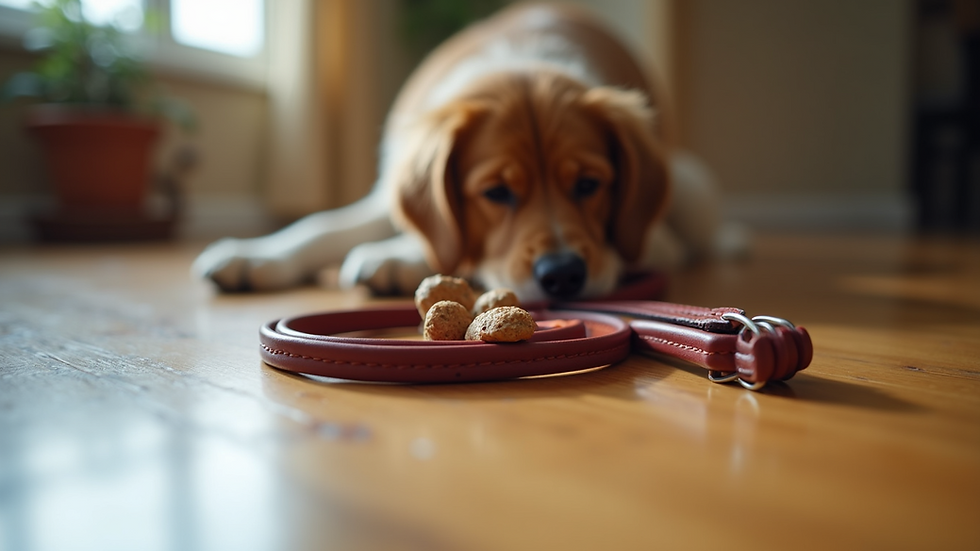Tailored Training Solutions for Your Dog
- Coral Atnikov
- Oct 17
- 4 min read
Training your dog isn’t a one-size-fits-all deal. Every pup is unique, with their own personality, challenges, and learning pace. That’s why tailored dog training is so important. It’s about crafting a plan that fits your dog’s specific needs and your lifestyle. Whether you’re dealing with a rambunctious puppy or a dog struggling with anxiety or aggression, personalized training can make all the difference.
Let’s dive into how customized training can help you and your dog build a stronger bond and enjoy a happier life together.
Why Tailored Dog Training Works Better
Have you ever tried to fit a square peg into a round hole? That’s what generic training programs can feel like. Dogs, like people, learn differently. Some respond well to treats, others to praise or play. Some need gentle encouragement, while others require firm boundaries.
Tailored dog training takes all this into account. It starts with understanding your dog’s temperament, breed traits, and behavior history. From there, a trainer designs a program that targets your dog’s specific challenges and goals.
For example, if your dog is anxious around strangers, the training might focus on gradual socialization and confidence-building exercises. If your puppy is full of energy and easily distracted, the plan might include short, fun sessions that keep their attention and build good habits early.
This approach isn’t just more effective - it’s kinder. It respects your dog’s individuality and helps them learn in a way that feels natural and rewarding.

How Tailored Dog Training Fits Your Life
One of the biggest hurdles in dog training is consistency. Life gets busy, and it’s easy to skip sessions or lose track of progress. Tailored training fits your schedule and home environment, making it easier to stick with it.
For instance, if you work long hours, a trainer might suggest shorter, more frequent sessions or provide exercises you can do in small pockets of time. If your dog struggles with specific triggers like other dogs or loud noises, training can happen in those real-life settings, not just a classroom.
In-home training is a game-changer here. It allows the trainer to see your dog’s behavior in their natural environment and tailor solutions accordingly. Plus, you get hands-on guidance on how to manage challenges as they happen.
This personalized support helps you feel confident and empowered, turning training into a positive experience for both you and your dog.

How much do you have to pay to train a dog?
Cost is often a big question when considering dog training. Prices can vary widely depending on the type of training, the trainer’s experience, and the location. Tailored dog training might seem more expensive upfront, but it often saves money in the long run by addressing problems effectively and preventing costly behavior issues.
Here’s a rough idea of what you might expect:
Group classes: Usually the most affordable, ranging from $100 to $300 for a multi-week course. However, they’re less personalized and may not address specific issues.
Private sessions: These can range from $50 to $150 per hour. Tailored training often falls here because it’s one-on-one and customized.
In-home training: Typically on the higher end, around $100 to $200 per session, but with the benefit of convenience and real-world context.
Remember, investing in quality training early can prevent frustration, damage, or even the heartbreaking decision to rehome a dog. Plus, many trainers offer packages or discounts for multiple sessions, making it more affordable.
If you want to explore professional options, check out dog training services that specialize in private, in-home training tailored to your dog’s needs.
Practical Tips for Tailored Training at Home
You don’t always need a professional to start personalized training. Here are some practical tips to get going:
Observe your dog: Take note of when and where behavior issues happen. Is your dog anxious during walks? Does your puppy get distracted during feeding time? This info helps you target training.
Set clear goals: What do you want to achieve? Better recall? Less barking? More calmness around guests? Clear goals keep training focused.
Use positive reinforcement: Reward good behavior with treats, praise, or play. Avoid punishment, which can increase anxiety or aggression.
Keep sessions short and fun: Dogs learn best in short bursts. Aim for 5-10 minutes a few times a day.
Be consistent: Use the same cues and routines. Everyone in the household should follow the same rules.
Adjust as needed: If something isn’t working, try a different approach. Tailored training is flexible.
Remember, patience is key. Progress might be slow, but every small step counts.

Building a Stronger Bond Through Training
Training isn’t just about obedience. It’s about communication and trust. When you tailor training to your dog’s needs, you’re showing them you understand and care. This strengthens your bond and makes your dog feel safe and valued.
Think about it - a dog that knows what’s expected and feels supported is less likely to act out. They become more confident and relaxed, which makes life easier and more enjoyable for both of you.
Tailored training also helps you read your dog’s signals better. You learn what motivates them, what stresses them out, and how to respond. This deeper connection is the foundation of a happy, healthy relationship.
If you’re ready to take the next step, consider reaching out to professionals who offer personalized support. They can guide you through tough behavior challenges and help your puppy get the best start possible.
Training your dog is a journey, not a race. With tailored dog training, you’re giving your dog the best chance to thrive. So why not start today? Your dog will thank you with wagging tails and joyful companionship.





















Comments